The tragedy and prowess of the Green Brahma. Colonel Danilov - Unknown Hero of the Great Patriotic
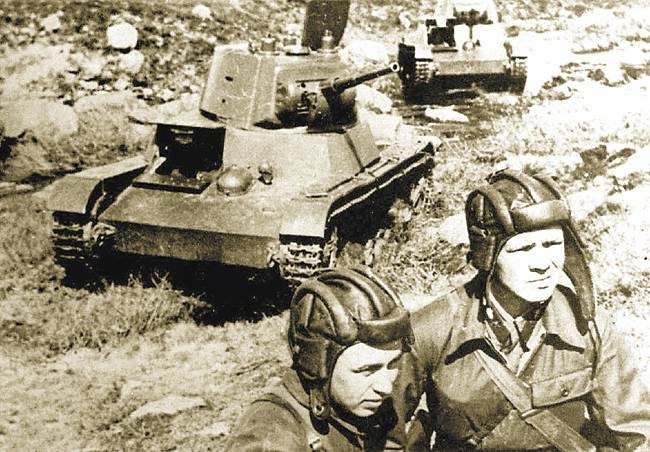
This name is known only to the historians of the Battle of Uman and search-enthusiasts. Colonel Danilov Alexander Ivanovich, Chief of Staff of the 24-th mechanized corps of the Kiev Special Military District (KOVO). He died in the Green Brama forest area in August 1941, where two battered Soviet armies were surrounded.
PETER PORT
A request sent to the Central Archive of the Ministry of Defense of the Russian Federation on behalf of the President of the International Association of Veterans of the Alpha Special Forces Sergey Goncharov, as well as materials gathered bit by bit, allowed to receive a copy of the personal file of Colonel Danilov, as well as recreate a short history 24 th mechanized corps.
So, as reported on him on the Ukrainian portal Photofact: “Danilov Oleksandr Ivanovich. The chief of staff of the 24 th mechanized corps, having beaten in Umanskiy Kotlі in serpnі 1941 rock.
Born in 1900 year - a native of the deaf village Torkhovo Troitskaya parish Rybinsk district, Yaroslavl province. Sisters: Helen, Olga, Maria (Marya) and Evdokia. They baptized a baby in the majestic Church of the Resurrection of Christ in the village of Ogarkovo, which is on the river Nakhta, now partially destroyed, abandoned from the thirties.
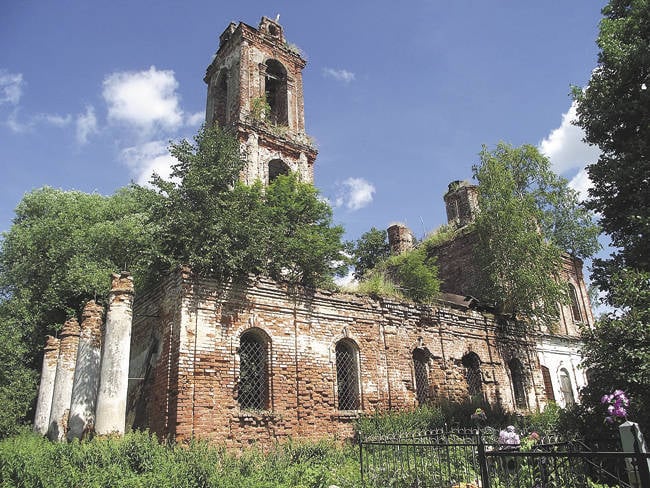
“Before the October Revolution, my parents were engaged in tillage, had two souls of earthly possession,” reports major Danilov in his autobiography, dated October 1938. “My parents had little livestock, namely: one cow (sometimes a heifer), one horse, but she did not have more time.”
Sasha left the village school of the village of Ogarkovo for only three months: “due to the lack of bread and clothes, I had to finish my studies”. At the age of nine, he was sent to his elder sister in Petersburg and given to a student at Vinogradov’s tailor workshop. He lived and worked for the bread.
We can only imagine the state of the boy, torn from the usual rural environment and found himself in a huge imperial city on the banks of the deep Neva, from strangers. In a similar way, then many children were led out “into people”, without being able to give them a decent, proper education.
Although during the apprenticeship, children had to master the basics of tailoring skills, most of them were not allowed to practical classes until the last year of study. Only then did the masters show how to sew different parts of clothing. They made sleeves, collars and a lining from scraps of fabric.
Living conditions were often terrible: the children were poorly fed, they were almost not given rest. Most of the students slept right in the workshops - on the floor, on the benches - or shared a bed with other youngsters. Children often followed the bad example of their elders. Adult workers taught them to card games, drinking, blasphemy and promiscuity in sexual relationships. Performing small orders of the master, the students got acquainted with the underworld and prostitution.
The main rule in the life of the tailor’s students was unquestioning obedience to the master. Painting by I. Bogdanov "Novice", 1893 year
After a four-year apprenticeship, Alexander from 1914 worked as a tailor's apprentice in various St. Petersburg workshops: on Malaya Okhta ("at Sorokin"), on Suvorovsky Avenue ("at Baturin") and on Glazov Street. Now he wore "urban clothes": pants, a shirt made of factory cloth and shoes. However, despite the external changes, his life, like hundreds of other apprentices, was little better than the lives of his students.
A myriad of stories about the disrespectful treatment of owners with employees has been preserved. Most young people ate only bread, cabbage soup and tea. Although, by law, they were given an hour for lunch and half an hour for breakfast and tea, the workers tried to eat as quickly as possible so as not to annoy the owners, who saw it as a loss.
In large ateliers and clothing stores, the rooms in which the owners received customers were clean and well furnished, but in the workshops themselves it was dirty and stuffy. Due to constant stress, many tailors began to drink. They received their earnings on Saturdays at the end of the day - and immediately went to the nearest tavern.
For the apprentice, the only way out of this situation was to become a master tailor himself, and, risking, to open his own business. But this path was long and did not guarantee success.
WAY TO THE GENERAL STAFF
Meanwhile, in February of the seventeenth, the long-awaited freedom was declared, but for some reason life became worse. By that time, Sasha Danilov was in the Petrograd Union of Needle Workers; He was interested in politics and shared the ideas of the Bolsheviks.
In September, tailor Danilov enlisted in the Red Guard, made up of armed red proletarians. During the October Revolution, he was in the squadron of the 1 of the urban area guarded the Foundry Bridge and participated in the seizure of a car garage on Trinity Street.
“After the October days, Baturin did not let me work in his workshop,” Alexander Ivanovich said in his autobiography, “and I was forced to look for a job elsewhere.”
Until the end of January 1918, Danilov was a tailor artel with the wonderful name “Work and Art” and at the same time served as a Red Guard. Ill, in the winter he went to his parents in the village, where he helped them with the housework.
In the summer of the eighteenth, Alexander lost his father, who went for bread to the Volga. Ivan Ilyich, according to eyewitnesses, was killed near Kazan by the Czechs, who seized the ship with passengers.
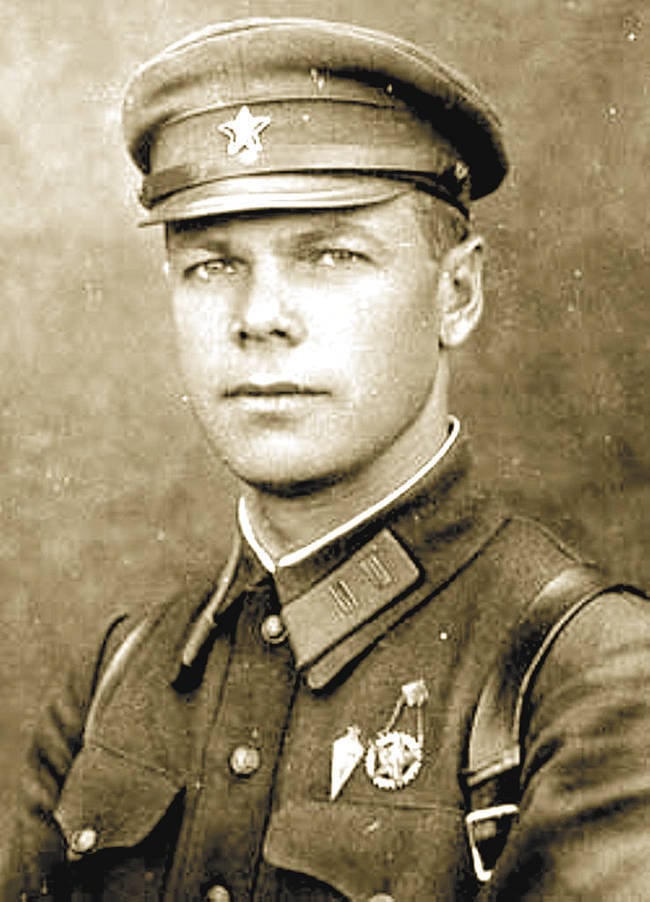
Already in September, 1918, Danilov volunteered to join the regular Red Army. He fought against Polish legionnaires near Pskov, units of General Yudenich and Poles of Pilsudski (Western Front). It was hard contused. In the Bolshevik Party, since July 1919. In the RCP (B.), It was adopted by the party organization of the 49 regiment of the 6 th infantry division, on the Western Front.
Red Army soldier, political officer of the company, battalion ... As part of the 50 Infantry Regiment of the 5 th Orlov Infantry Division, Alexander Danilov participated in the liquidation of the Kolesnikov revolt in the south of the Voronezh province. In 1920-1921, guerrilla actions covered several counties on the average Don under the slogans “Soviets without Communists!” And “Against robberies and famine!”
Outraged by the heavy surplus, many peasants, even the poor, supported the rebels. According to the stories of the veteran of the first composition of Group A of the KGB, a participant in the assault on the palace of Amin Nikolai Berlev, a native of these places, one can judge about the scale of violence perpetrated on both sides.
“The rector of the church in Nizhny Gnilushakh indicated to the White Guards in the floodplain of the Mammonk River a place where retreating Red Army soldiers were hiding,” says Nikolai Vasilievich. - The fugitives were captured and shot. In retaliation, activist Alexandra Obydennykh, Street Tailors, grabbed the priest and his two teenage sons and drove them to the Bubnikh tract for reprisals.
When the priest, preparing for the inevitable death, began to read a prayer, Alexandra pulled out a sword and cut off his head, and then caught up with the children who had fled and cut them down. Later, when Kolesnikov’s rebellion broke out, Shuru the Tailors were seized and executed, having thrust a stake between her legs into it.
In our Lower Mammon gangsters executed fifty men in one day. They were driven into the alley to our house. Then the corpses were transported on sleds and dumped to the gate. In total, our village lost up to nine hundred people at that time.
Or such a case. In the summer of 1921, my grandmother Vasilisa was rinsing linen in Mammonk. Suddenly he sees a rider, who turned out to be Zhilyakov from Upper Mamon. He drove a resident of Lower Mamon Sbitnev and immediately shot him. He took a glass out of his pocket, filled it with blood from the victim's wound, and suggested to his grandmother: “Do you want Rhine?” She, naturally, recoiled ... Then Zhilyakov said: “Well, let us be healthy!” He drank in one gulp, washed the glass and rode away, ”concludes Nikolai Vasilyevich.
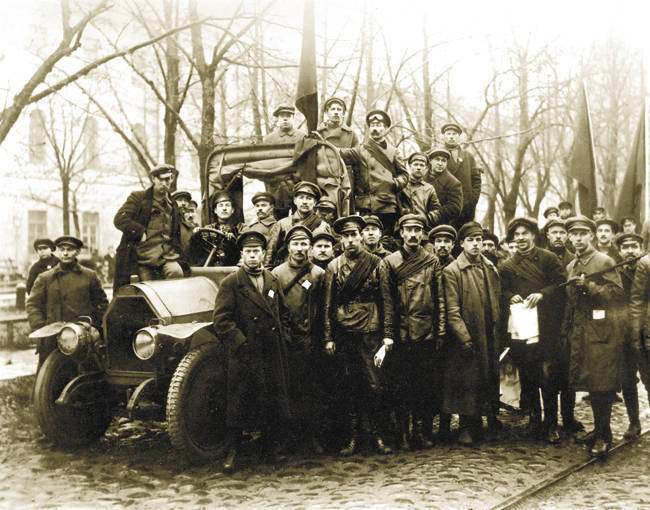
Such atrocities occur throughout a reeling and distraught country that has lost its human appearance. The forces released by February 1917-th, collected abundant human harvest.
By the time the 50 Infantry Regiment appeared on the average Don, the uprising had subsided, and its military leader Kolesnikov was killed by his own people. The rebels, as is often the case, degenerated into ordinary criminals, sometimes cutting out whole families, including brutally massacred in the village of Osetrovka with priest Aristarkh Nartsev and his wife.
The peasants, supporting the new economic policy announced by the authorities, gave out gangsters and fought with them themselves weapons in hand. Those who did not lay down their arms were eliminated by units of the Red Army.
For participation in the elimination of banditry on the average Don, the political officer of the battalion Danilov was awarded a silver watch. In the 1922 year, having received a referral to Petrograd, he was trained for nine months at the preparatory department of the Military-Political Instructor Institute.
What else? Was married. However, the wife’s name and surname are unknown. It is known that the spouse is a dressmaker from Pushkino, the daughter of a brick factory worker who died in the German front on 1916.
As the head of the economic team of the 60 Infantry Regiment of the 20 Infantry Division, Danilov was elected as a deputy to the Detskoselsky (former Tsarkoselsky) City Council (1927-1928) by the paint. Member of the party bureau of the same military unit.
MOSCOW, ACADEMY
In the spring of 1930, Alexander Ivanovich was enrolled as a listener at the Red Banner Military Academy named after MV Frunze, which was then located in Dolgorukiy's House on Prechistenka (Kropotkin Street) and in the mansion on Vozdvizhenka Street Comintern. The gloomy, stern building in the spirit of “red militarism”, the visiting card of the Frunzensky district of the capital, will appear on the Maiden Field only by 1937 year.
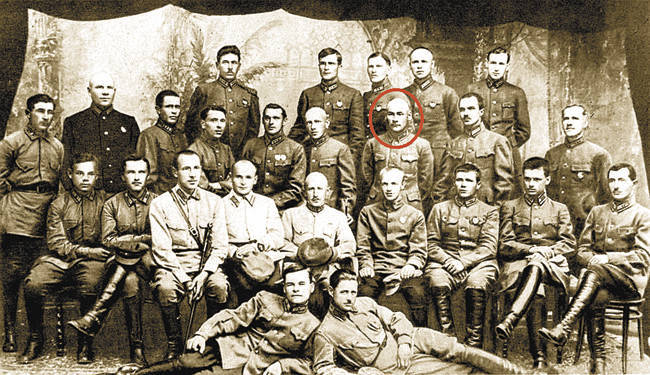
Generations of commanders of different ages and positions remembered and loved this building on Prechistenka, where they studied, from where they set out on a broad military road. Now it houses the museum and exhibition complex of the Russian Academy of Arts "Art Gallery of Zurab Tsereteli."
Examinations were strict, according to an extensive program - from examining the knowledge of the charters and the ability to use weapons well to tests in political disciplines, literature, and military history from ancient times to the present day, in tactics. A large audience with dozens of officers at the tables ... Complete silence, broken only by the rustle of cards, the rustling of papers and occasionally disturbing coughing.
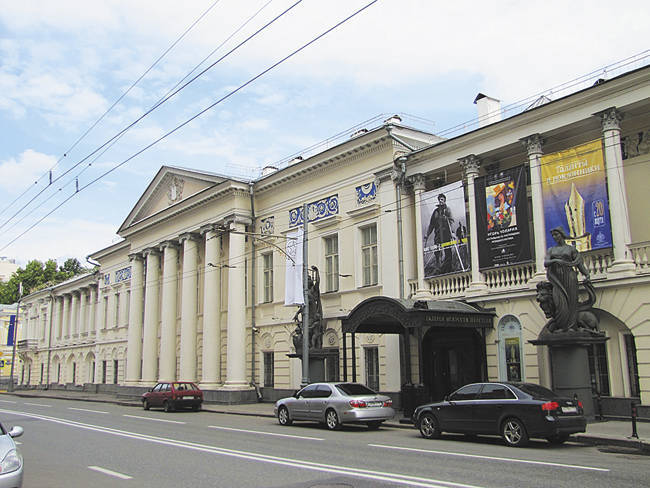
Exams lasted about a month. Finally, Alexander Ivanovich excitedly approached the bulletin board and read his name in the list of enrolled. On the same day, he received a document addressed to the commander of the 20 Infantry Division about the secondment of the listener A. I. Danilov to the head of the Academy.
Danilov graduated from the main personnel school of the Red Army in 1933. He graduated from the first category and was sent to the Belarusian Military District (BWO) as an assistant chief of the 1-th (operational) branch of the headquarters of the 43-th rifle division. Being a man of excitement, Alexander Ivanovich decided to test himself in the air, but in 1935, while making the sixth parachute jump, he landed badly and broke his right leg.
Scroll further on his personal business. In 1935-1937 - Assistant Chief of the 1-th (operational) department of the headquarters of the Belarusian Military District (BVI). Then in 1937 there was a transfer to Moscow: the assistant, then the senior assistant to the head of the 1 department of the (operational) General Staff of the Red Army.
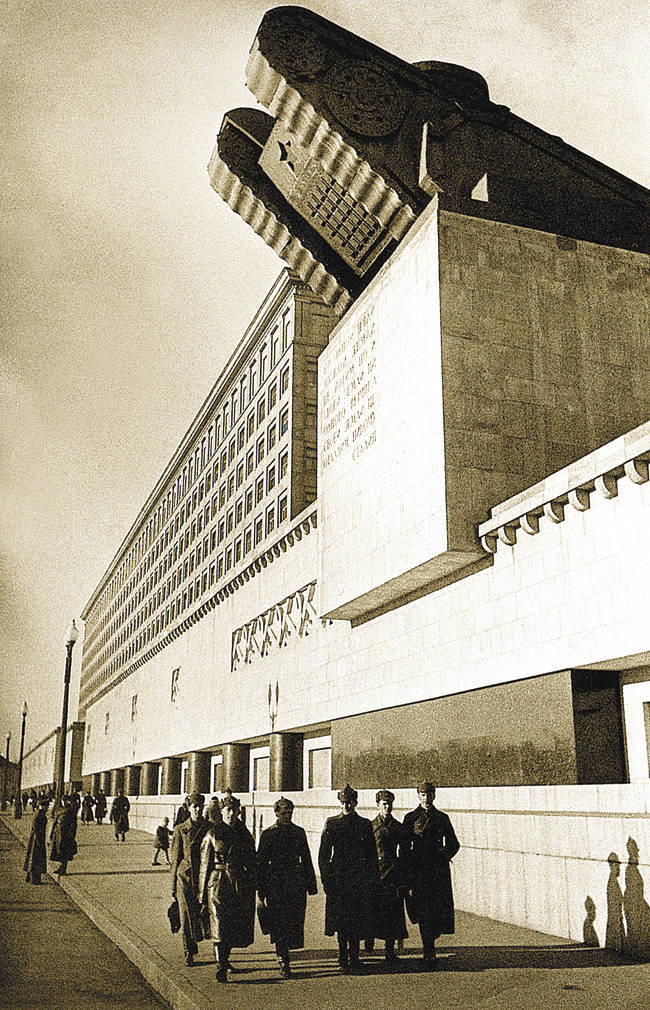
By a decree of the Presidium of the Supreme Soviet of the USSR, Colonel Danilov is awarded the Order of the Badge of Honor (1938) and the medal "The XXth Anniversary of the Red Army" (1938). In 1939, he graduated in absentia from the Academy of the General Staff of the Red Army. In his track record, thus, two higher military education.
Together with Alexander Ivanovich, his mother lived in Moscow, Daria Nikitichna Danilova, and his wife, who, as stated in her autobiography, due to "the disease state does not work, is engaged in housekeeping." The sisters had long since settled in Leningrad. Elena Kaurova, Olga Zernova and Maria Artemyeva worked at the Putilov factory, Evdokia Solovyova worked at a candy factory.
KIEV, UKRAINE - LAST LOVE ...
In October, 1939-th Colonel Danilov was sent to the Kiev Special Military District to the post of chief of the 1-th (operational) branch of KOVO headquarters. In this capacity, he was on March 1941 year.
Alexander Ivanovich worked under the direct start of the future Marshal of the USSR I. Kh. Bagramyan, with whom, literally, they did not agree on the characters - they were too different in temperament, in the style of work.
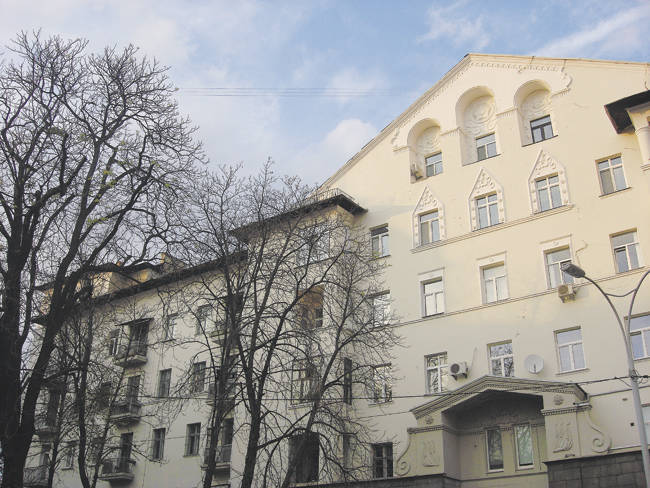
In the memoirs of I. Kh. Bagramyan, “So the war began” we read: “The first department, which was in charge of operational affairs, was headed by a forty-year-old colonel Alexander Ivanovich Danilov, my deputy, knowledgeable and experienced commander. In the Red Army he served from the age of eighteen, graduated with honors from the Military Academy named after MV Frunze. In the Finnish campaign he was wounded in the leg and remained lame for the rest of his life. Energetic, agile, noisy, he did not like to sit still: he was always in a hurry somewhere, giving orders on the go. I cannot stand the nervousness in my work, and therefore from the very first days I had to restrain my overly hot deputy. But he reacted very painfully to my attempts to work in a more relaxed and business environment. ”
The personal file of Colonel Danilov regarding his participation in the Finnish campaign does not say anything - which, as the study of archive files shows, is not uncommon for some of the military who were sent to the Soviet-Finnish front for a short period of time.
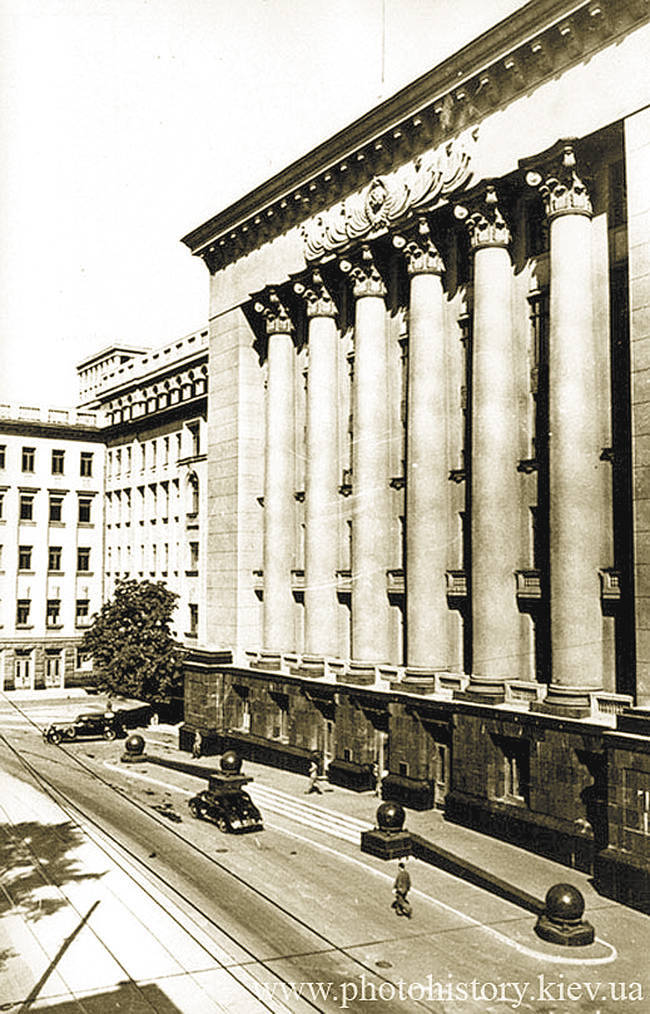
Responsible for his section of work, Colonel Danilov pored over the Plan of covering the border on the eve of the War. In the second half of February, 1941 was followed by an order: the chief of staff of KOVO, M. A. Purkayev, together with a group of generals and officers who took part in the development of this most important document, urgently arrive in Moscow.
Major General Major-General left for the capital together with M. A. Purkaev aviation N. A. Laskin, Head of the 5th Division of the District Headquarters, Major General I. I. Trutko, Head of the Communications Troops Major General D. M. Dobykin, Head of Military Communications Colonel A. A. Korshunov, Head of the Operations Division I. Kh. Baghramyan and, in fact, A. I. Danilov.
The sudden call to Moscow, on the one hand, was alarmed: did the plan really worked out so badly that it would have to be redone? On the other hand, I had a meeting with my mother, Darya Nikitichna, and my wife ... Upon arrival, however, everything became clear: the people of Kiev had to take part in consideration of measures to further strengthen the state border.
When a suitable vacancy appeared, Alexander Ivanovich left KOVO headquarters and 12 in March 1941 was appointed chief of staff of the 24 th mechanized corps (military unit 7161). His commander was Kotovsky's comrade in the Civil War, Major General Vladimir Ivanovich Chistyakov.
The corps was deployed in the territory of Kamenets-Podolsk region: in the cities of Proskurov (now Khmelnitsky) and Starokonstantinov and the station Yarmolintsy. The body was formed almost from scratch. It consisted of two tank and one motorized divisions.
The 45-I tank division (commander - brigade commander Mikhail Solomatin) was deployed in the area of Kazimirka, Drummer, Yankovtsy, Balamutovka. Its headquarters was located on the farm Mikhalkovitsky. On arms in the division was a small number of tanks BT and T-26.
The 49 Panzer Division (commander - Colonel Konstantin Shvetsov) was stationed in the Giletti area, Khmelevka, Nemechin. Its headquarters was located in the town of Felshtin.
216-I motorized division (commander - Colonel Ashot Sargsyan) was stationed in the area Krasilovskaya Sloboda, Pashutintsy, Skovarodki, Molchani. The headquarters was located in the village of Drying.
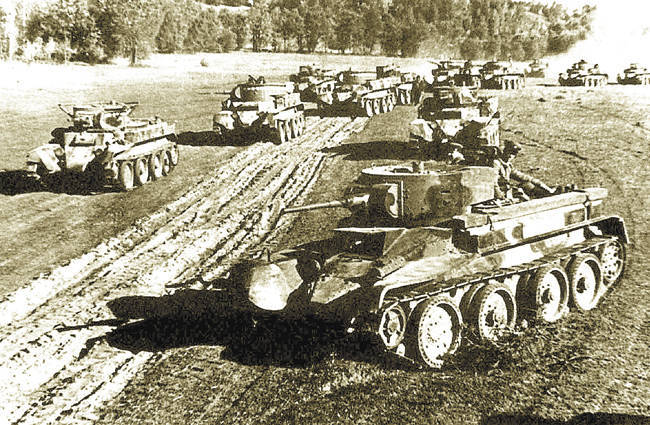
From March to June 1941, the commanders of the 24-mk managed out of the unshooted recruits, recruits, and many did not even have proper education, and at the weakest base in KOVO (222 light tank), to make a full-fledged corps, which, contrary to expectations, remained operational and with a general collapse of the front (end of July 1941 of the year).
Data on the state of Major General Chistyakov’s corps for March-April 24 testify to the actual feat of the 1941 commanding officers.
Personnel data: from 21.556 people higher education for 238 people, higher unfinished - 19, secondary - 1.947, nine classes - 410, eight classes - 1.607, seven classes - 2.160, six classes - 1.046, five classes - 1.468, four classes - 4.040, three classes - 3.431, two classes - 2.281, one class - 2.468, illiterate - 441.
“There are no visual aids, training devices, training weapons.”
“The brake in the formation is a large shortage of personnel, especially technical and economic services, as well as junior. For example, in the 9250 military unit (216-I motorized division) in one unit on 1200 there is only 15 man in the command, in the 1703 unit (45-I tank division) in 100-120 man. the Red Army has one average commander. "
Consider this fact: the corps was staffed on 70% by recruits of the March conscription 1941 of the year. Of course, at the headquarters of KOVO, they did not count on him, but the war put everything in its place.
"... MOUNTAIN TO TROOPS, INSISTED TO HIM"
The war that was so expected, so prepared for it, turned into a Holocaust of the summer of forty-one. With reference to the situation in Ukraine, grave blame lies with the commander of KOVO, Hero of the Soviet Union, Colonel-General Mikhail Kirponose. It is about him in his memoirs that the Marshal of the USSR Konstantin Rokossovsky writes the bitter words: "... At these moments I finally came to the conclusion that this volume, complex and responsible duties, and woe to the troops entrusted to him, are not on the shoulder."
Not later than June 24, the headquarters of the 24-th Mechanized Corps received an order from the commander of the South-Polar Division, General Kirponos, to advance the formation to the Kremenets area. It is possible that in this area the front command supposed to create a counter-attack group on the edge of the German offensive to break the general situation in their favor.
The corps of Chistyakov was to make an 100-kilometer march from Proskurov to Kremenets in the conditions of an almost complete lack of vehicles, depreciation of the available equipment, with the full domination of the enemy aircraft.
When the enemy of 26 June reached the nearest approaches to Kremenets, the 24 corps was still 60 kilometers from the city, marching on foot and under the influence of German aircraft.
The enemy went to Rivne and Ostrog. However, the commander of the South-Western Front, General Kirponos, still believed that the German tank group would turn south of the 6 and 26 army to the rear. Therefore, he gave the order to create on the line Starokonstantinov, Kuzmin, Bazalya, New Vishnevets a “cut-off line”.
“The commanders of the reserve formations were urgently summoned to headquarters,” recalled Marshal I. Kh. Baghramyan. “Among them was my comrade, Major-General Vladimir Ivanovich Chistyakov, an old cavalryman, an ally of the legendary Kotovsky. We have known each other since 1924, since studying in the higher cavalry school.
Now Chistyakov commanded the Mechanism 24. Arriving in Tarnopol, he immediately found me and inquired about the latest data from the battlefields. When it came to the task of his corps, Chistyakov expressed concern for his right flank. I reassured a friend: I already knew that the 1-I airborne brigade would be deployed to the Ostropolsky fortified area to the right of the building of Chistyakov. She will cover his right flank.
“Eh, it's not just that,” Chistyakov sighed. - Our body is far from what we would like to see it. After all, we just turned around with its formation. We didn’t have time to get new tanks, there are no cars, it’s bad with weapons ... So, my friend, if you hear that you don’t fight so well, don’t judge strictly. Know: we are doing everything in our power.
We already said goodbye when I remembered that in the building of Chistyakov 216 of the motorized division was commanded by my former colleague in the Leninakan cavalry regiment Ashot Sargsyan. He asked how he was doing. Chistyakov spoke about Colonel Sargsyan with delight. Great commander, favorite fighters.
It was pleasant to hear that those certifications that I wrote on Ashot Sargsyan when he was still a squadron commander in my regiment were justified. Dashing equestrian and spiritual person, he had a lively and sharp mind. He grabbed everything on the fly, perfectly mastered any weapon and was known as a great connoisseur of tactics. The fighters clung to him, they were ready for hours to listen to his conversations - always deep, bright, passionate.
“Our Ashot knows how to light people,” said Chistyakov. - And now it is especially necessary.
I really wanted to see Sargsyan. But never succeeded. My brave friend heroically died in the hard July battles ...
Chistyakov and the commanders of other formations put forward on the cut-off line, having received tasks, left. But later it turned out that we were rushed to push our last major reserve here. In those days, the fascist command did not intend to turn its main strike force southward. The enemy rushed right to Kiev, ”concludes Marshal I. Kh. Baghramyan.
Exhausted by long, exhausting and treacherous, in fact, many kilometers of marches, which were carried out under the strikes of enemy aircraft, the corps of Major General Chistyakov acted "essentially as a rifle corps with poor motorization and artillery equipment." In just one day of June 30, he completed a total of “march to 150-200 km with the engines running on the 20-25 clock” (from the report of the Chief of the Armored Directorate of the South-Western Front).
On July 2, the enemy unexpectedly captured Tarnopol, ahead of the Soviet troops moving so fast. There was a real threat of the unimpeded advance of the Germans to Proskurov and the defeat of the rear areas of the two armies. In this situation, the front commander deployed the 24 th mechanized corps south to occupy the Proskurov fortified area. The task was assigned to him: firmly occupying the defense, to ensure the withdrawal of troops of the 6 and 26 army.
Having completed the 50-kilometer crossing from the Lanovets area, the main parts of the 24 mechanized corps reached the specified line only by the end of 3 July and did not manage to prepare defenses in the long-term structures of the fortified area by the beginning of the battles. Through his military formations, the broken units of the 6 Army followed. They concentrated in its rear, where they were put in order at an accelerated pace. Departing units demoralizingly acted on the personnel, which was basically based on unstripped recruits.
Small mobile detachments were quickly separated from the squad to deter the enemy on the approaches to the fortified area and reinforce the connections of the 24 mechanized corps. So, 10-I tank division due to the huge downtrodden crossings through Zbruch troops and equipment at Podvolochiska all day 3 July fought to contain the enemy on the outskirts of the river.
The division departed only in the evening, destroying the crossing. These actions allowed the 24 Mechanism Corps to take an organized approach to the line of the fortified area along the Zbruch River in the Volochisk district.
On July 4, Corps Chistyakov along with his defense sector was transferred to the 26 Army. He covered her retreat, and then the retreat of General P. G. Ponedelin’s 12 Army — the one that would be in the “Umansky Cauldron” along with General I.N. Muzychenko’s 6 Army.
Despite all the unfavorable factors, the mechanized corps of General Chistyakov, if possible, retained his small armored vehicles. So, on July 7, it “after stubborn fighting in the Volochysk region ...“ comes out of the battle for the Proskurovskiy fortified area, having 100 combat vehicles in its composition ”(from the report of the leadership of the South-Western Front to the Chief of the Red Army General Staff). According to the report of the Assistant Commander of the Southern Front on ABTV on 27-30 in July, the corps of Chistyakov still had 10 BT tanks, 64 T-26, two flamethrower tanks, and also a number of armored vehicles.
And the fact that the 24 th mechanized corps, which was created almost from scratch, became a combat unit of KOVO in the shortest possible time, and that he managed to keep some of the equipment, there is an undoubted and significant merit of the chief of staff - Colonel Alexander Ivanovich Danilov.
By the night of August 1 1941, the Nazis in Ukraine took the city of Uman by storm. The units and subunits of the 12 Army were redeployed beyond the deep Sinyukha River, where they took up defensive positions. The troops are deeply buried in the ground, strengthen and mask their positions, put up anti-tank barriers.
"STRONGLY HOLDING EXTENDED EXTERNAL TRADES ..."
In those fateful days and weeks, the two armies were surrounded - without reserves, stocks of ammunition, fuel. Without air cover. Without knowledge of the operational environment. The situation is critical, desperate. However, General Tyulenev, the commander of the Southern Front, radically received the received radiograms: “Firmly hold the lines occupied ...” When it was too late, he ordered a breakthrough.
In general, there are many reasons for what happened near Uman, but one of them is the position of the commander of the Southern Front. As Major-General Yakov Tonkonogov, the former commander of the 1983 Infantry Division, said sternly in 141: “Tyulenev was unworthy, giving Pondelin information about“ slowness and indecision ”of Ponedelin leaving his entourage to the East.
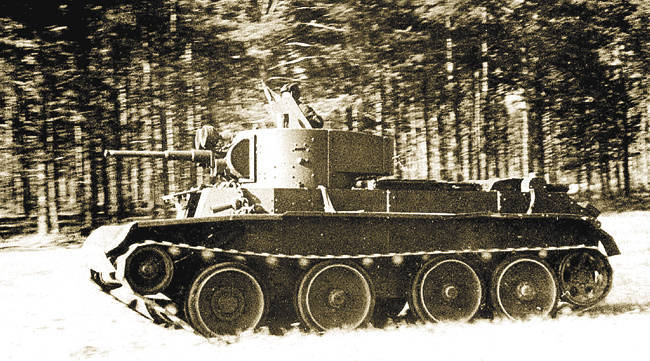
While the 6 and 12 armies carried out Tyulenev's order to act in the Northeast, to hold the front Khristinovka - Potash - Zvenygorodok, the 18 army denied the left flank of the 6 army, quickly leaving Golovanevsk to Pervomaisk, facilitated the 49 army gsk Germans reach from the south of the 6 group and 12 armies. Ponedelin was shot in 1950 year.
Tyulenev was saved by the Southern Front and the 18 Army, and the 40 of thousands of soldiers of the 6 and 12 armies died because of him. ”
Obviously, General Tyulenev sought to disclaim responsibility for the fate of Ponedelin's group. At the same time, he did not hesitate to blame the commander himself for sins unacceptable for any military leader, and this justified his unwillingness to help those surrounded.
What were the last days of the life of Colonel Alexander Danilov and his colleagues on the 24-th mechanized corps? This can be judged only by the surviving fragmentary information. After all, most of the participants in those events fell dead by the brave or surrendered and later suffered a painful death in the Umanskaya Pit concentration camp.
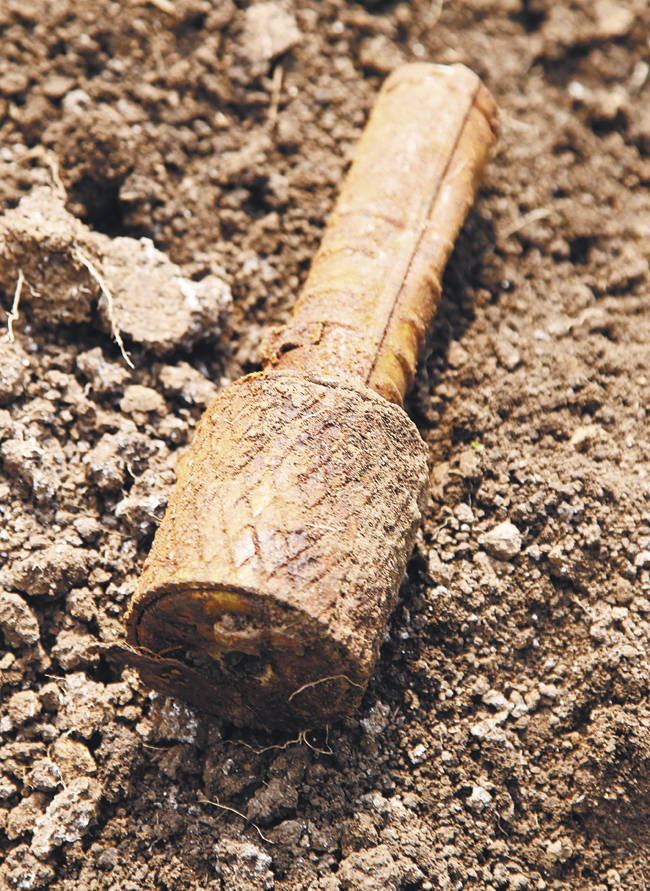
... On August 2, the rain poured in a continuous stream, as if the whole world fell on the ground with tears on each of the soldiers and officers. The captured Nazis stated bluntly: “You cannot get out of these places. Our command took all measures to completely destroy the encircled Soviet troops ... ”The double ring around Ponedelin’s group, which included the 24 th mechanized corps, was closed.
On August 2, the remnants of the troops of the 6 and 12 armies continue to be drawn into the Green Forest in the oak grove, where they occupy all-round defense and begin to fiercely, almost to the point of despair, to counterattack the enemy. During the night, trenches were dug, mine and non-explosive barriers were installed.
3 August is constantly bombed by enemy aircraft. It seems there was no such piece of land where bombs and shells would not be torn. Our artillery responded weakly: took care of ammunition for a decisive battle. No anti-aircraft projectiles to fight aircraft. Incendiary bottles are also ending, so there is almost nothing to fight with tanks.
German mountain rangers shot the wounded Red Army soldiers, including women. The German command on the eve issued a decree: to treat women in uniform as soldiers, and armed women in civilian clothes - as partisans.
Realizing the futility of the Ponedelin group's attacks in the east and north-east directions and the inability to restore the front in this way, the South-West Command ordered General Tyulenev to withdraw the 6 and 12 army to the south, to join the 18 army.
And what? He, in violation of the order, did not bring it to the notice of the commanders of the 6 and 12 armies, and on August 4 repeated his order: Ponedelin's group - to break east to the line of the Sinyukh River. Cause? Apparently, General Tyulenev was still counting on the success of his plan, despite the significant deterioration of the situation in the front line.
The most active actions during the day took place on the southern and south-eastern parts of the encirclement front. The strike group 24-th MK continued to advance in the east and north-east.
K 17.00 The 49 Tank Division, with the support of the 211 airborne brigade, was already fighting three kilometers from the village of Tishkovka. The 16 Motorcycle Regiment and the 44 Mountain Division I again attacked Novo-Arkhangelsk, taking him into a half ring. The 58-I GSS deployed from near the village of Kopenkovatoy was unfolding in the Ternovka area. But Chistyakov’s corps failed to break through to Yampol, as planned by the command of the 12 Army.
The enemy regarded the actions of 24 mk on the eastern bank of the Sinyukha River as the creation of a springboard for withdrawing the entire group from its encirclement. Therefore, the enemy planned the operation to destroy the Soviet troops that had broken through to the Novo-Arkhangelsk-Ternovka-Tishkovka area. It was planned to cut off the grouping of Soviet troops from the river, cut it into pieces and destroy it.
The offensive of the enemy began in 9.00. The units, which were strongly stretched along the front, could not hold the line of defense and began to quickly roll back to the river. In the afternoon, the fascists, with the support of artillery and aviation, attacked Tishkovka and Ternovka. As ALLukianov recalled: the enemy attacked "simultaneously from the north, east and south, squeezing our defenses into a ring."
By noon, the enemy approached Ternovka, where the artillery positions of the 58-th GDS were located. At the same time, along the western coast of Sinyukha, the “Lang” group of the 1 Gyouger Mountain Division took to the village. The rear areas of the 58 th GDS and 24 mk, located in the Pansky Forest, were destroyed.
“We sent our binoculars there,” wrote S.I. Gerzhov many years later, “and saw how German tanks and machine gunners launched an offensive towards us from all sides. There were a lot of our troops in the big forest. All our artillery remained in the same place ... It was easy to imagine the tragedy of the soldiers of our batteries who did not have fuel and ammunition. ”
By evening, virtually all Soviet troops that had crossed the river were destroyed. The 49-I tank, 44-I and 58-I mountain rifle divisions, 211-I division and 2-I have been defeated.
By attacking, the enemy outstripped the actions of the Soviet troops in a breakthrough from the encirclement, since on August 4, on the 15 watch, the command of the Southern Front still authorized to leave the encirclement, but not to the south, but to the east. By this time, the advantageous bridgehead behind Sinyukha had already been lost, and it was necessary to re-form the strike force.
On the night of August 4, airplanes of the Southern Front for the last time 60 tons of cargo (ammunition and gasoline) were dropped at the location of the Ponedelin group.
The ring of enemy encirclement shrank to its limits, and the front of the 18 Army retreated south of Pervomaisk. The bridgehead on which the surrounded troops (about 65 thousand people) were crowded that day did not exceed the size of 10 by 10 kilometers.
A direct participant in the events of I. A. Khizenko in his book “Revived Pages” writes: “All day long - in continuous attacks: Germans attack - we defend and rush forward; We attack - goes to the defense and tightly compresses the ring of the enemy.
The fascists, through amplifiers, offer to surrender. Give time to think. Strange, how do they know the names of the commanders and even the names of their children? Here they call the name of the staff commander, the names of his children. Talk, make different assumptions. Remembered. Last winter, a girl with a Red Cross bandage on her sleeve walked through our apartments in Proskurov. She offered children's first aid kits, wrote down who and how much was needed ... "
COUNTER BATTLE ON BLUE
So, the last fierce battles took place between the Sinyukha and Yatrani rivers - in the thick oak forest “Green Brama”, which gave the remnants of troops 6 and 12 armies, crowded near the villages Podvysokoe and Kopenkovatoe, the last support and protection from endless attacks from the ground and air.
After the severe injury of General Chistyakov, it must have been Colonel Danilov who at the end of June assumed command of the remnants of the 24 Mechanized Corps. But this is only an assumption. As already mentioned, nothing is known about his last days and weeks. The feat of those who are the real heroes of the Green Frames was committed to oblivion for many decades.
Ponedelin's team has developed a new breakthrough plan for 5 in August. 12-I army formed a shock group in the composition of the 8-th sk and the remnants of 13-th sk and 24-th microns. The overall objective of the operation was supposed to be an organized exit with the maximum preservation of manpower and materiel in the direction of Pervomaisk. There was supposed to connect with the 18-th army. 24-mk mk was assigned the task: to advance along the Sinyukha channel to the south.
By 5 in August, the enemy troops also had a crisis in the supply of ammunition. As a result, the German command decided to launch a decisive offensive to finally defeat Ponedelin’s group. As stated in the order: “the battle of today must end with the final destruction of the enemy, there are no ammunition for a repeat offensive”.
The commencement of a general offensive was planned for 10.00. The events of 5 August actually turned into a counter battle. The battle lasted until the evening, but without much result.
Then, with the aim of disorganizing control and disrupting further attempts to break out of the entourage in 12.00, a massive shelling from artillery of the entire surrounding space began. It turned out to be especially powerful and effective in the area of the southern edge of the Zelyana Brama forest and the village of Kopenkovatoe. Here, in particular, the commander of the artillery of the 6 Army, General G. I. Fedorov, and the commander of the 37 sk skombrig S. P. Zybin, who were preparing for a breakthrough, were killed.
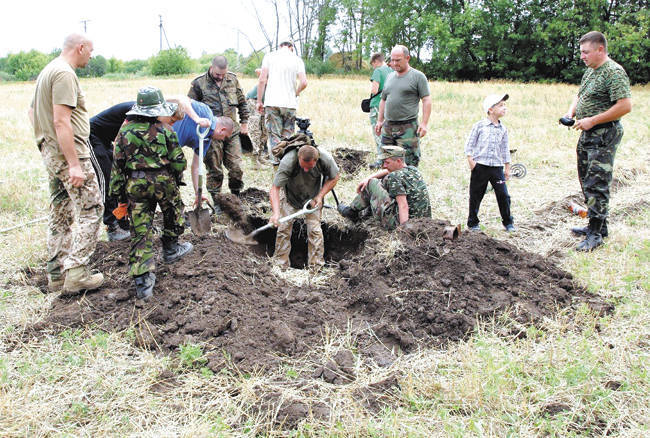
As a result of the oncoming battle of 5, the plan for the final liquidation of the surrounded grouping of the 6 and 12 armies was thwarted. But the troops of the Ponedelin group did not fulfill the task set, could not break through and themselves suffered heavy losses. A number of important strongholds were lost, the front of the encirclement narrowed considerably, and the Soviet troops found themselves in a completely sweep-through area of artillery and small arms.
While 5 August, the remnants of the 6 and 12 armies were bleeding to get out of the encirclement, the headquarters of the Southern Front once again reported to Moscow that it had ordered General Ponedelin with “new attacks to break through his way and get out of the encirclement in the eastern direction. "
The order was delivered to the Green Bram by an air ambulance plane, which landed with difficulty on a narrow strip of Soviet land, which was already sweeping through enemy artillery. Behind the troops, there is the Sinyukh river, up to 80 wide and three meters deep, all the ferries through which were destroyed, and the Germans are already on its opposite bank.
General Ponedelin, having read the orders of the front commander, just smiled bitterly and asked the pilot to pick up a few bags of mail. The plane was shot down on takeoff, and the last letters never reached the mainland.
Much later, in the memoirs Through Three Wars, published in 1972, General Tyulenev stated with cynical serenity: "On the day when the report was written to GHQ, the 6 and 12-I armies, exhausted by bloody battles, were already completely surrounded by Uman. ”
THE BLUEBERRY, BECOMING A RED
And the troops continued to fight! The command of Ponedelin's group did not abandon the plan for a breakthrough from the environment, whose terms were postponed to the night from 5 to August 6.
In a radiogram to the front headquarters of 5 in August, Major-General Ponedelin reported: “The struggle is in 3 radius of kilometers, the center is Podvysokoe, everything is in battle. "Piglet" is shot through from all sides. Opponent continuously bombed, 4 aircraft shot down. Beat artillery and mortars, expect tanks to attack. The task - to hold out until the evening, at night we go to the assault. The troops are behaving heroically. Please help - meet us. ”
German historian Hans Shtehets, a participant in those events, in the book “Mountain huntsmen near Uman” writes (“Gebirgsjagder bei Uman):“ The corps commander was convinced that the enemy captured in the boiler was very strong. He quickly tightened orders in a confined space. With perseverance and fanatical composure, the enemy was still hoping for good luck that he would be able to break the ring on his own. Therefore, the corps commander decided on August 5 to attack simultaneously with all the forces of the corps and deliver the final blow to the enemy.
From 10 in the morning hours of this day, the region of Torgovitsa - Nebelivka - the forest west of Podvysokogo was subjected to bombardment. By that time, the 1 Mountain Division had already captured 2500 prisoners, 23 guns of all kinds, 3 tank, 200 carts, a lot of weapons and ammunition. But the success that was hoped for and which required so much endurance, courage and inhuman strength of the forces of forces, August 5 again was not achieved. The enemy attacked without interruption, always ... fought with his last heroic struggle, incomparably hard and fanatically decisive. In his hopeless situation, promoted by the commissars, he did not give up in any way and still hoped to break through to the south and southeast.
At nightfall, the enemy resumed attempts to break through, but he failed to break through. But parts of the 4 Mountain Division did not have the strength to pursue the Russians, and remained in their positions ... Assessment of the situation by the evening of August 5 showed that the enemy was now trapped in a narrow space. A large forest near Podvysoky length of about 12 kilometers became the point of concentration and shelter of the remnants of a broken enemy. "
On the night of August 6, a new breakthrough was planned in Ponedelin’s group, which was to start at one in the morning at 1. A motorcade is being built, the last drops of gasoline are being pumped out for cars. Ahead - artillery tractors and tractors, followed by trucks. Immediately there are two miraculously surviving tanks and several armored cars. Three breakthrough support teams and a strong rearguard rear cover detachment are created with the order to stand up to a special team.
At the appointed time, followed by the team "Forward!" At dawn, the enemy came to his senses. Enemy artillery began to work, aircraft appeared in the sky. The tank of General Muzychenko was hit, and he was wounded. The column, which stretched for a dozen kilometers, was divided into several parts. Each part or detachment live and die alone.
With startling speed, rumors about the capture of the commanders Ponedelin and Muzychenko, the corps commanders of the generals Snegov and Kirillov began to spread. Right there from the air fell leaflets, in which supposedly Ponedelin suggested that the fighters lay down their arms and surrender. On the leaflet, he himself was depicted surrounded by German officers with a glass of champagne in his hand ...
UNWRITTEN LAW OF WAR: DIE - KILL!
Throughout the first half of August, the Green Brama remained a fortress without walls, towers and moats. The Nazis were afraid to enter the forest, they decided to take his siege.
7 August. By this time, almost abandoned by the command of the South-Western and Southern fronts, having lost many of their commanders, the remnants of the 6 and 12 armies in the Uman region could only count on their own forces, which were already running out.
Despite this, attempts to break through from the environment continue. And only in the second half of the day, the Chief of Staff of the 12 Army, General B. I. Arushanyan, sent the penultimate radiogram to the headquarters of the Southern Front: “The attempt to get out of the encirclement failed. During the day and night I ask 6 on 7.8 to bomb methodically with aviation ... ”
His latest radio message (in a distorted wording) reads: “6 and 12 armies are surrounded ... Ammunition, no fuel. The ring is compressed. Environment firing. I have 20 000 bayonets. The rearguards from the north ... strike on Pervomaisk at the connection with the 18-th army ... "
The breakthroughs to the south, towards Pervomaisk, on the night of August 6 and to the east of August 7 failed. The forces were thawing in counterattacks, reflected by German artillery barriers and tanks from the south, and the Sinyukha river - with tanks and machine guns on the east bank.
After the unsuccessful attempt of the last breakthrough, the remnants of the subunits in small groups in search of salvation began to return to the Green Bram. By the evening of that day, the troops surrounded in the Podvysokogo region, which had recently formed the group of General Ponedelin, lost control, but even then they did not stop their resistance.
The already mentioned Hans Shtehets reports: “The situation in the area of operations of the 1 Mountain Division for the corps commander has long been unclear. Telephone connection is broken. The defeated enemy again created a serious situation. In 16.00, Colonel Pikker went on the offensive on Podvysokoe. His huntsmen moved to the village from the east and southeast, and in a fierce street battle seized the eastern outskirts of Podvysokogo. In 18.30, the northern flank of the Lang group took the height of 185 and the bridge two kilometers from the church at Podvysokom. But by nightfall, all of our battalions again defended themselves in readiness to repel the night breakthrough of the Russians.
On the night of August 8, another attempt was made by the Russians to break through the northern flank of the 1 Mountain Division. The Russians stormed in several waves with shouts of “Hurray!”, Urged on by their commissars. About an hour went hand-to-hand fight. Our losses multiplied. Several commanders of companies were killed ... The mountain huntsmen held their positions, but they could not prevent the Russians from breaking through. Through the emerged passages, some of them moved south-east to Vladimirovka, others went south, to Rossohovatka. True, near Vladimirovka and Rossokhovatki, already in 10 kilometers from the place of the breakthrough, all these groups were overtaken and destroyed. This is the last time reared by the defeated enemy. His resistance was finally broken. ”
In the morning of August 8 it started to rain again. On that day, the fascists began to identify and destroy individual detachments of troops of the 6 and 12 armies, who were hiding in the forest and ravines. It was then that the last battle of the consolidated detachment led by General S. Ya. Ogurtsov on the field of sunflowers, which was noted by many German witnesses, but could not affect the overall situation.
Focal fighting in the area of the Green Brahma continued for several more days. Some detachments die under the blows of the enemy, others break out of the encirclement and go into the unknown, often towards their doom or captivity. The remaining equipment and military equipment are burned with straw. Buried banners, documents.
Mikhail Solomatin, commander of the 45 Tank Division, which was part of the 24-th MK, managed to break through to his own. Poet and war veteran Yevgeny Dolmatovsky writes: “In August 1941, he just received the rank of major general, and his subordinates, by habit, often called him a colonel. Solomatin gathered a detachment of up to 200 people in Green Brama. All these were crews without tanks.
The division commander Solomatina was already close to fifty. He had the opportunity to participate in the First World War and the Civil War. He knew how to act with a bayonet, and having hastily trained this tank crew, led his detachment in a southwesterly direction. ”
A detachment with heavy fighting made its way to Dnepropetrovsk.
Subsequently, Mikhail Dmitrievich commanded a tank brigade, was seriously wounded; headed the Gorky Armored Center, then, returning to the front, led the tank corps and the army. He graduated from army service in Colonel-General in 1959 year. He died in 1986 year.
SHIELD COVERING KIEV
The command of the Southern Front, up to August 8, did not know what was happening to the surrounded armies. Worse, it did not even process the data that had already arrived at its headquarters. Meanwhile, stubborn focal fights continued around the perimeter of the Green Frames - no longer for leaving the encirclement, but for more expensive to give up their lives.
13 August. This date is recorded in history as the end of the Battle of Podvysokogo. But Green Brahma did not submit. In the depths of it, small groups of warriors from different units, armed with captured weapons, were still standing. They were weary of thirst and hunger, eating grass. In the besieged forest - not a brook, but heavy rains sank the earth, and the water remained in the small vymoinah.
Desperate battles that fought the 6 and 12 armies, first in the operational and then in the tactical environment from late July until almost the middle of August, proved to be historically contributing to the collapse of the fascist Blitzkrieg. According to German historians in the area of Uman, Podvysokogo, and around the Greenwood oak forest, our troops for twenty months bound twenty-two German divisions and almost all the satellite troops.
The remains of the 6 and 12 armies covered Dnepropetrovsk, Zaporozhye, and Donbass with breastfeeding, ensuring the evacuation of factory equipment, values, and the population. 99 of thousands of wagons with equipment were sent from Dnepropetrovsk. The Ponedelin Group was a shield covering Kiev from the south.
By August 5, 85.295 wagons of various cargoes were evacuated from the capital of Ukraine. The warriors who fought in the Green Brama ensured the mobilization of fresh forces in Right-Bank Ukraine. It was a significant, but dramatic contribution to a distant Victory!
Locals buried the fallen on the battlefields - in trenches, silage pits. Most of them are still listed as “missing”. About 18,5 thousands of our soldiers died in the "Umansky boiler", from 50 to 74 thousands (according to the enemy) became prisoners of the death camp, the infamous "Umanskaya pit".
Those who did not find the strength to fight did not know what to expect: “During the evening of August 27, several thousand Soviet prisoners of war were forced into the camp near Uman. The camp was designed to stay from 500 to 800 people, but every hour arrived 2-3 thousands. No provisions were provided. It was a terrible heat.
By evening, there were already 8 thousand people in the camp. Oberfeldwebel Leo Mellart, a guard from the 101 Infantry Division, heard shouts and shooting from the darkness. Moreover, they were clearly shooting from large-caliber weapons. It turned out that three 85-mm anti-aircraft guns fired point-blank at the fenced-in barbed-wire territory allegedly because "the prisoners attempted a mass escape."
According to Mellart, then about one and a half thousand prisoners of war died and were seriously injured. The disgusting organization led to a terrible crowding, but the commandant Gysin did not want to go into conflict with the authorities "(Robert Kershaw" 1941 was the year through the eyes of the Germans: birch crosses instead of Iron ", M.," Yauza ", 2010).
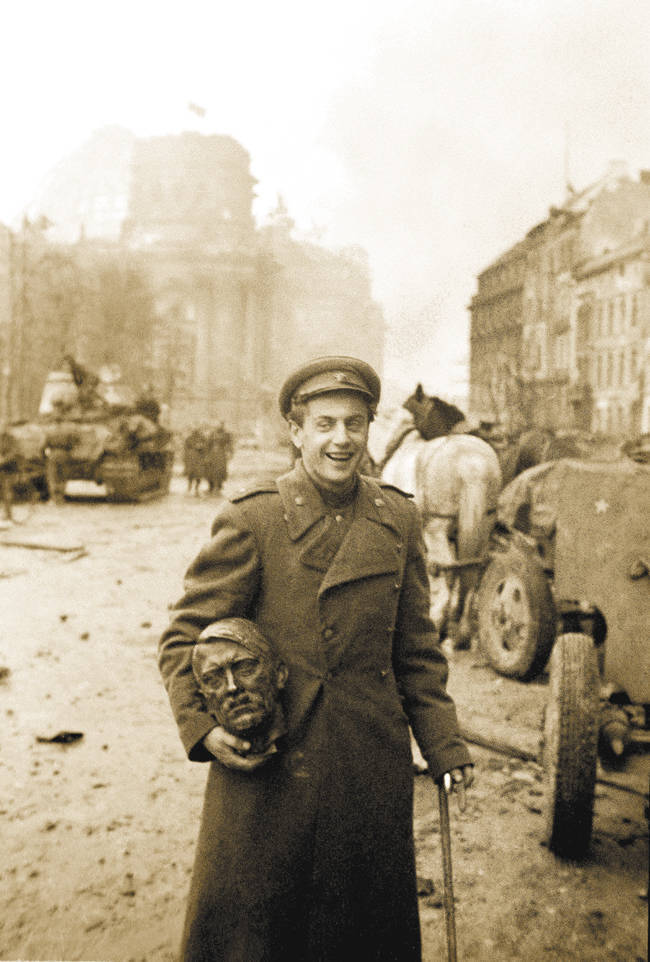
According to the Southern Front (operational report No. 098), only for the period from 1 to 8 in August, the entourage came out in its lane to 11.000 people and 1015 vehicles with combat assets. Also 3.620 people. the wounded were evacuated. Some soldiers and officers hid the locals.
Unknown burial place of 24. “On the shoulders they carried the wounded corps commander, General Vladimir Ivanovich Chistyakov. He died in the hands of his comrades at the last turn. But the detachment with heavy fighting broke through to Dnepropetrovsk, ”wrote Yevgeny Dolmatovsky, a war correspondent and editor of the 12 Army newspaper Zvezda Sovetov, in the book“ Green Brama ”(1989). According to other information, General Chistyakov died in a military hospital in Pervomaisk from heart failure no later than August 18 of 1941, where he was buried.
Under Umany, the deputy for the political part of 24, Brigade Commissar Peter Silvestrov, the head of the operations department, Major Ivan Astakhov, the head of the communications department, Colonel Nikolai Fedorov, the head of the motor transport service, Lieutenant Colonel Vasily Vasilyev, died.
The brave commander of the 49 Panzer Division, Konstantin Shvetsov, the commander of the 216 motorized division Ashot Sargsyan and many, many other soldiers and officers of the 24 mechanized, whose names you know, fell by death.
Together with them, Colonel Danilov did not come out of battle. It happened, it is not excluded, directly on the Sinyukha River, which, according to eyewitnesses, was brown for a few days with blood. He, with a crippled leg, and even, perhaps, a wounded man, was not possible to swim to the other side. Surrender to the enemy? This was out of the question.
According to official data, Colonel Alexander Danilov went missing. At the time of 1943, according to the documents of TsAMO, his family was in the territory of the South Ural Military District (must be in evacuation).
Presumably, the sisters of Colonel Danilov, Olga Ivanovna Zernova, Maria Ivanovna Artemyeva, and Evdokia Ivanovna Solovyova, did not survive the blockade of Leningrad.
... Having visited the Prokhorovsky field on the Kursk Bulge in the summer of 2013, President Putin spoke of the need to open the names of forgotten heroes for the future. With the publication dedicated to Colonel Danilov, as well as to all the heroes of the Green Brahma, we make our own contribution to this work.
Paraphrasing the author of the Living and the Dead trilogy, Konstantin Simonov, who created one of the best novels about the Great War, we can say about Colonel Danilov with words addressed to the commander Serpilin ...
He did not know and could not know in those terrible, withering days, the full price of everything already accomplished by the people of their 24 th mechanized corps, soldiers and officers of the 6 th and 12 th armies. And, like him and his subordinates, thousands of other people who fought to death in thousands of other places with stubbornness unplanned by the Germans did not know the full price of their affairs.
They did not know and could not know that the generals of the victorious German army that were advancing on Moscow, Leningrad and Kiev fifteen years later would call this summer of forty-first years a time of deceived expectations, successes that had not become a victory.
They could not have foreseen these bitter admissions of the future of the enemy, but almost every one of them then, in the summer of forty-first, had a hand in making all this happen.
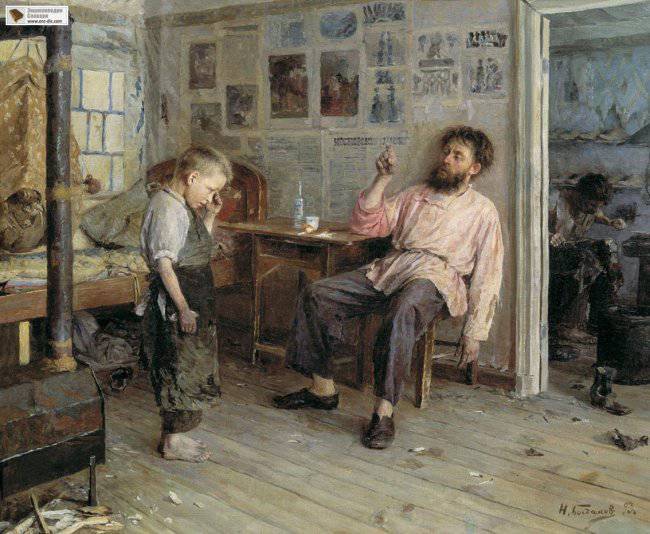
Information